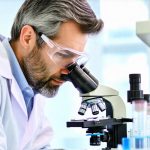The investigation of crime scenes often focuses on what is immediately apparent – visible bloodstains, obvious wounds, disturbed objects. However, many crimes leave behind traces that are far less conspicuous, requiring specialized techniques and a deep understanding of blood’s properties to detect and interpret. These latent blood traces, those without readily visible signs, can be crucial in reconstructing events, identifying perpetrators, and ultimately achieving justice. They represent the “silent witnesses” often overlooked in initial assessments, yet capable of speaking volumes when properly examined. Understanding how blood behaves after it leaves the body, the factors that degrade its visibility, and the scientific methods used to reveal these hidden traces is paramount for forensic scientists and investigators alike.
The challenge lies not only in detecting these minimal traces but also in differentiating them from other substances and environmental factors. Blood can be masked by cleaning efforts, diluted by water or other fluids, absorbed into porous surfaces, or simply broken down over time. Furthermore, the interpretation of latent blood evidence requires careful consideration of context – the scene itself, potential mechanisms of transfer, and any associated activities. It’s a complex puzzle where scientific rigor meets investigative intuition, demanding meticulous documentation and analysis to avoid misinterpretation and ensure reliable results. The absence of obvious signs doesn’t equate to an absence of evidence; it merely necessitates a more refined approach to uncovering the truth.
Preserving the Invisible: Factors Affecting Latent Blood Trace Detection
The persistence and detectability of blood traces are influenced by a multitude of factors, ranging from environmental conditions to the nature of the surface on which they land. Temperature, humidity, light exposure, and even microbial activity all play a role in the degradation process. For instance, higher temperatures accelerate decomposition, while moisture promotes bacterial growth that breaks down blood components. Porous surfaces like fabric or wood readily absorb blood, making it less visible but also offering some protection from environmental factors – though simultaneously increasing the difficulty of extraction. Smooth, non-porous surfaces allow blood to spread and potentially become diluted or wiped away more easily.
The quantity of blood deposited is also critical. Microscopic traces are far harder to detect than larger stains, even if both have been exposed to similar conditions. The age of the trace impacts detection too; older bloodstains undergo chemical changes that can alter their reactivity with presumptive tests and make visual identification more difficult. Furthermore, cleaning attempts – whether thorough or superficial – can significantly reduce visibility and potentially compromise detection methods. It’s essential to remember that even seemingly insignificant cleaning efforts can dramatically alter the evidence landscape.
Finally, the composition of the blood itself can influence its persistence. Factors like the individual’s health, medications they were taking, or post-mortem alterations can affect how quickly blood degrades and interacts with testing reagents. Therefore, a comprehensive understanding of these variables is vital for accurately assessing latent blood traces and interpreting the results of forensic investigations. The detective work isn’t just about finding the evidence; it’s about understanding its journey from source to discovery.
Advanced Presumptive Testing Methods
Presumptive tests are the first line of defense in detecting potential blood, offering rapid initial screening. While they don’t definitively identify blood (hence “presumptive”), they indicate the presence of a substance with properties similar to blood, prompting further confirmatory testing. The classic Kastle-Meyer test, utilizing phenolphthalein, remains widely used but has limitations in sensitivity and susceptibility to false positives from plant peroxidases. Modern presumptive tests are designed to overcome these drawbacks.
- Luminol: This chemiluminescent reagent reacts with the iron present in hemoglobin, producing a visible glow when sprayed on surfaces. It’s highly sensitive and can detect even heavily diluted or cleaned blood traces. However, it’s also prone to false positives from other oxidizing agents like bleach or metal oxides.
- Amido Black: A protein stain that binds to proteins in blood, making them visually detectable, particularly on dark surfaces. It is useful for visualizing blood stains after cleaning attempts where luminol may be ineffective.
- Leuco Crystal Violet (LCV): Offers improved specificity compared to luminol and Kastle-Meyer, reacting specifically with hemoglobin. This reduces the likelihood of false positives and provides clearer visualization of blood traces.
The application of these tests requires careful technique and documentation. Proper controls are essential to minimize errors and ensure reliable results. It’s also crucial to understand the limitations of each test and interpret findings accordingly. Presumptive testing is a screening tool, not a definitive identification method; confirmatory testing is always necessary.
Confirmatory Testing: Identifying Blood with Certainty
Once presumptive tests indicate the presence of blood, confirmatory tests are employed to definitively identify it as such and differentiate it from other substances. These tests rely on identifying specific components unique to human blood, providing a higher degree of certainty. The gold standard for blood confirmation is immunological testing, which detects human hemoglobin using antibodies that specifically bind to it.
- Immunoelectrophoresis: This technique combines electrophoresis (separating proteins based on charge and size) with immunochemical detection, allowing for the identification of human hemoglobin with high accuracy. It’s particularly useful in distinguishing human blood from animal blood.
- DNA Analysis: Extracting DNA from even trace amounts of blood allows for species identification and, potentially, individualization if sufficient genetic material is present. This is arguably the most powerful confirmatory test, providing both definitive species confirmation and potential links to a suspect.
- Mass Spectrometry: Advanced techniques like MALDI-TOF mass spectrometry can identify specific peptides within hemoglobin, providing a highly accurate and sensitive method for blood identification.
These confirmatory tests are typically performed in forensic laboratories by trained personnel using sophisticated equipment. The results provide the basis for strong evidence presented in court, relying on scientifically validated methods to ensure reliability and admissibility. The transition from presumptive testing to definitive confirmation is vital; it’s where suspicion transforms into demonstrable fact.
Transfer Mechanisms & Pattern Interpretation
Even microscopic blood traces can reveal valuable information about how events unfolded through understanding transfer mechanisms – the ways in which blood moves from its original source to other surfaces or objects. These transfers can be direct, such as during contact with a wound, or indirect, resulting from spatter, wiping, or transfer via clothing.
- Contact Transfer: Occurs when a bloody surface comes into direct contact with another surface, leaving behind traces of blood. This can reveal information about the movements and interactions between individuals involved in an incident.
- Spatter Patterns: Even very small droplets can contribute to overall spatter patterns, providing insights into the force, angle, and origin of the blood source. Analyzing these patterns helps reconstruct events like assaults or injuries.
- Wipe Transfer: Occurs when a bloody surface is wiped or cleaned, leaving behind smears or wipe marks that indicate an attempt to conceal evidence. The directionality of wipe marks can also provide clues about how the cleaning was performed.
Interpreting these transfer mechanisms requires careful consideration of the scene context and potential scenarios. Bloodstain pattern analysis (BPA) uses scientific principles and mathematical calculations to reconstruct events based on bloodstain characteristics, including size, shape, distribution, and relationship to other objects. It’s critical to avoid making assumptions and instead rely on objective observations and documented evidence. The patterns themselves tell a story – the challenge is learning how to read it accurately.





















